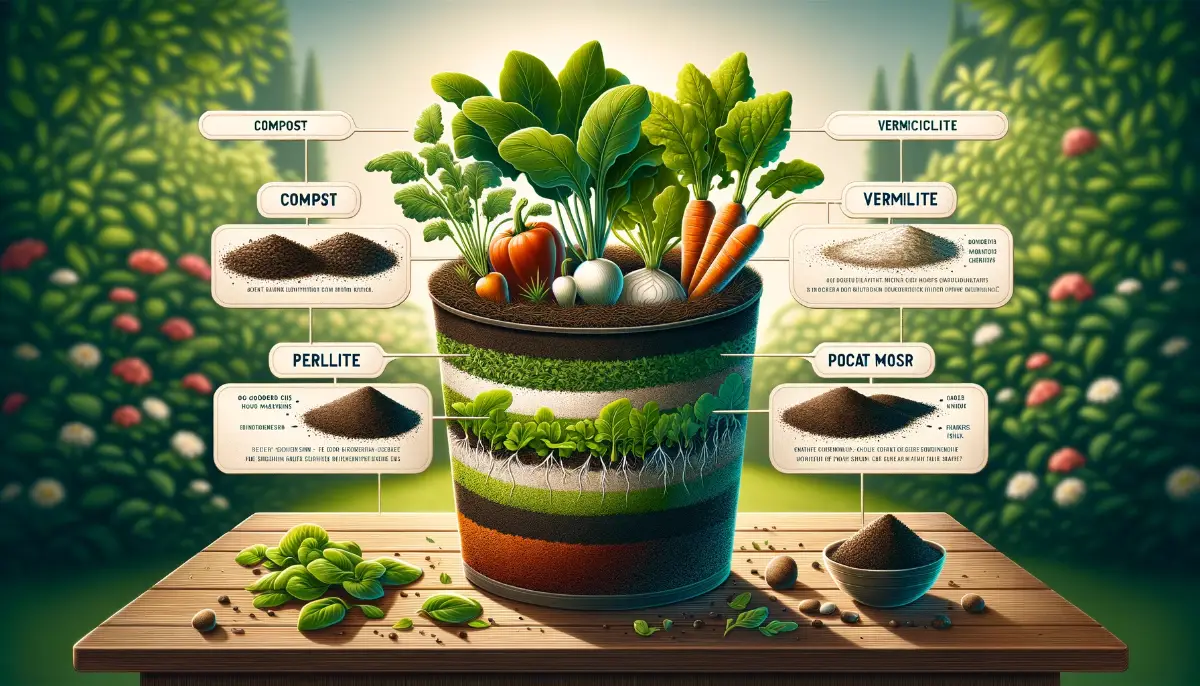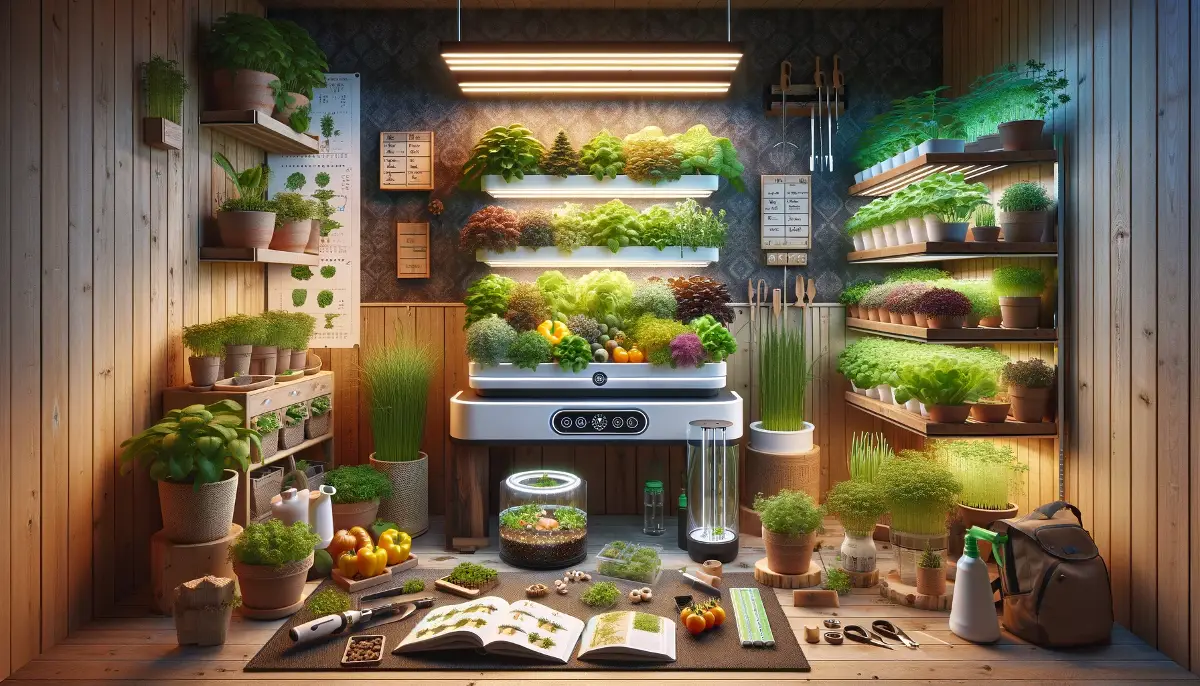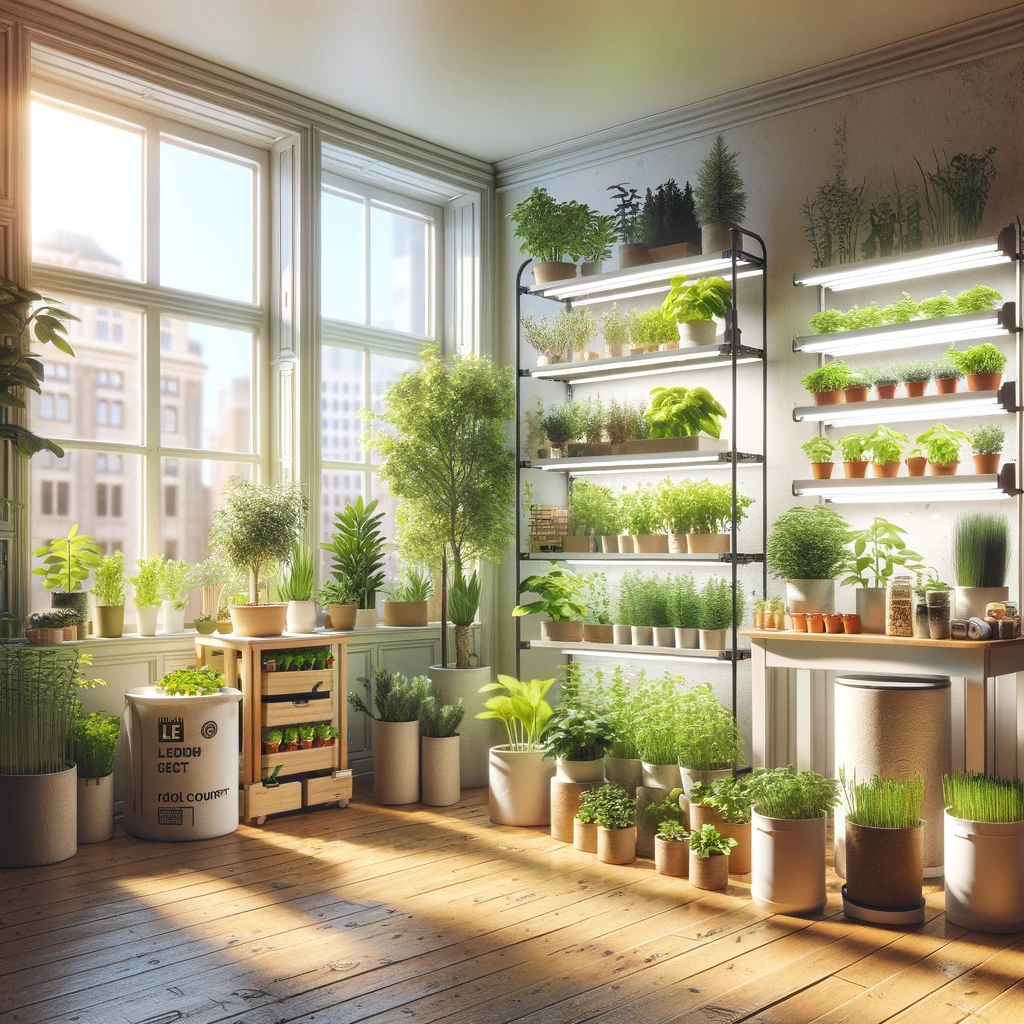When it comes to nurturing vegetables in containers, the choice of best soil is not just a matter of detail – it’s a cornerstone of success. An ideal soil mixture is pivotal in fostering robust growth and bountiful harvests, providing the necessary nutrients and aeration that potted vegetables crave.
Understanding the balance of moisture retention and drainage, alongside nutrient content, can make the difference between thriving plants and lackluster results. Hence, investing the time to select or create the best soil mix can lead to healthier plants and more rewarding gardening experiences.
Key Components and Characteristics of an Ideal Potting Mix for Vegetables
- Well-Draining: The soil should have good drainage to prevent waterlogging, which can lead to root rot. A mixture that includes perlite, vermiculite, or sand can improve drainage.
- Nutrient-Rich: Vegetables need a lot of nutrients to grow and produce. Incorporate compost or well-rotted manure into the mix to add essential nutrients. A slow-release fertilizer can also be beneficial.
- Loose and Aerated: The soil should be loose enough to allow for air circulation around the roots. A mix that includes peat moss, coco coir, or vermiculite can help keep the soil light and airy.
- pH Balanced: Most vegetables prefer a soil pH between 6.0 and 7.0. Test the pH of your soil mix and adjust it if necessary using lime (to raise pH) or sulfur (to lower pH).
- Moisture Retentive: While good drainage is crucial, the soil should also be able to retain enough moisture to keep plants hydrated. Ingredients like peat moss and coco coir can help retain moisture without causing waterlogging.
- Organic Matter: Including plenty of organic matter, such as compost, in the mix will improve soil structure, nutrient content, and moisture retention.
- Non-Soil Components: Especially for container gardening, using a mix that is not entirely soil-based can be beneficial. Non-soil components like perlite, vermiculite, and peat moss reduce the risk of soil-borne diseases and improve the overall condition of the potting mix.
Creating your own organic potting mix for vegetables can be rewarding and allows for customization based on the specific needs of your plants. Here are a few organic recipes for vegetable potting mixes that promote healthy growth and yield:
Basic Organic Potting Mix
- 3 parts compost: Serves as the primary organic matter source, providing nutrients.
- 1 part coco coir or peat moss: Helps in moisture retention.
- 1 part perlite or pumice: Enhances drainage and aeration in the mix.
Nutrient-Rich Mix for Heavy Feeders
Some vegetables, like tomatoes and peppers, are heavy feeders and benefit from a nutrient-rich mix.
- 4 parts compost: Use a mix of different composts for a wide range of nutrients.
- 1 part worm castings: Adds essential nutrients and beneficial microorganisms.
- 1 part perlite or vermiculite: For aeration and moisture retention.
- 1/2 part kelp meal or seaweed powder: Provides trace minerals.
Moisture-Retentive Mix for Leafy Greens
Leafy greens require consistent moisture, so a mix that retains water well is ideal.
- 3 parts compost: Acts as the base and nutrient source.
- 2 parts coco coir: Excellent for retaining moisture without waterlogging.
- 1 part perlite: For drainage, to ensure the mix isn’t too soggy.
- 1/2 part green sand: Adds potassium and trace minerals.
Light Mix for Root Vegetables
Root vegetables like carrots and beets prefer a lighter mix that allows for easy root expansion.
- 2 parts compost: Provides nutrients.
- 2 parts peat moss or coco coir: Lightens the mix and retains moisture.
- 1 part perlite or sand: Ensures good drainage and aeration, making it easier for roots to grow.
Customizable Mix with Mycorrhizae
Incorporating mycorrhizae can enhance root growth and nutrient uptake.
- 3 parts compost: Nutrient base.
- 2 parts peat moss or coco coir: For moisture.
- 1 part perlite or pumice: For aeration.
- Mycorrhizae powder: Follow the product’s recommended application rate, mixing it into the potting mix to promote symbiotic relationships between the roots and fungi.
Tips for Organic Potting Mixes
- pH Testing: Most vegetables prefer a pH between 6.0 and 7.0. Test your mix and adjust with garden lime to raise pH or sulfur to lower pH if necessary.
- Refreshing Nutrients: Top-dress your pots with compost or a balanced organic fertilizer during the growing season to replenish nutrients.
- Moisture Check: Organic mixes can dry out differently than commercial mixes. Regularly check moisture levels and adjust watering as needed.
Remember, the best mix can depend on the specific vegetables you’re growing and their unique needs. Feel free to experiment and adjust these recipes based on your observations and experiences.
FAQs
What is an organic potting mix?
An organic potting mix is a soil-less blend of natural materials like compost, coco coir, peat moss, perlite, and worm castings. It’s designed to support plant growth without the use of synthetic chemicals, providing a sustainable environment for vegetables.
Why use perlite or vermiculite in a potting mix?
Perlite and vermiculite improve soil aeration and drainage, which helps prevent waterlogging. Perlite is best for enhancing drainage and aeration, while vermiculite is better for moisture retention.
Can I reuse organic potting mix?
Yes, organic potting mix can be reused, but it’s recommended to replenish the nutrients first. This can be done by adding fresh compost, worm castings, or a balanced organic fertilizer to the old mix.
How often should I water vegetables in an organic potting mix?
Watering frequency depends on the mix’s components, the type of vegetables, and environmental conditions. Typically, vegetables in organic potting mix require watering when the top inch of the soil feels dry to the touch.
Do I need to adjust the pH of my organic potting mix?
Most vegetables thrive in a pH range of 6.0 to 7.0. It’s a good practice to test the pH of your potting mix and adjust it if necessary using garden lime to raise the pH or sulfur to lower it.
What are worm castings, and why are they beneficial?
Worm castings are the end product of the breakdown of organic matter by earthworms. They are rich in nutrients and beneficial microorganisms, making them an excellent addition to potting mixes for enhancing soil fertility and plant health.
How do I make a potting mix for heavy feeder vegetables?
For heavy feeders like tomatoes and peppers, use a nutrient-rich mix composed of 4 parts compost, 1 part worm castings, 1 part perlite or vermiculite, and 1/2 part kelp meal or seaweed powder to provide a wide range of nutrients.
Can I create a potting mix for specific vegetables like leafy greens or root vegetables?
Yes, you can customize potting mixes to suit specific vegetables. For leafy greens, a moisture-retentive mix is ideal, while root vegetables prefer a lighter mix that allows for easy root expansion.
What is the role of mycorrhizae in potting mixes?
Mycorrhizae are beneficial fungi that form symbiotic relationships with plant roots, enhancing water and nutrient uptake, and improving plant resilience against stress. Adding mycorrhizae to your potting mix can significantly benefit plant growth.
How do I store unused organic potting mix?
Store unused organic potting mix in a dry, cool place in a sealed container or bag to prevent it from getting wet or infested with pests. This will help maintain its quality for future use.









